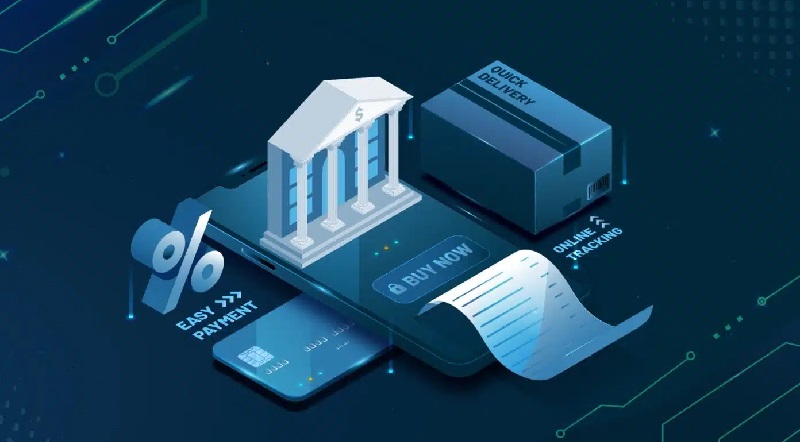As banks increasingly embrace digital transformation, they are adopting various business models to offer digital financial services that meet evolving customer expectations. These models enable banks to deliver efficient, scalable, and personalized banking solutions in a rapidly digitizing world. Below are some of the basic business models that banks are utilizing to provide digital financial services.
1. Digital-Only Bank (Neobank)
The digital-only bank model focuses entirely on online and mobile banking, with no physical branches. Neobanks offer streamlined, mobile-first banking services aimed at delivering a superior user experience at a lower cost.
- Key Features:
- Mobile app as the primary interface for banking
- Low fees or no fees for transactions
- Real-time notifications, expense tracking, and budgeting tools
- Instant access to banking services such as opening accounts, transferring funds, and loans
- Revenue Streams:
- Interchange fees from debit card transactions
- Subscription fees for premium services (e.g., higher withdrawal limits, rewards)
- Partnerships with third-party providers for additional services like insurance and wealth management
- Example: Chime, N26, Monzo
2. Freemium Model
The freemium model is where banks offer basic services for free while charging for premium features. This approach allows banks to attract a large user base with no-cost services and upsell value-added products to generate revenue.
- Key Features:
- Free core services like checking accounts, savings accounts, and payments
- Premium services include higher interest rates, insurance, travel benefits, or investment tools
- Focus on a user-friendly interface and simplified onboarding process
- Revenue Streams:
- Subscription fees for premium accounts or services
- Fees for additional services (currency exchange, insurance, financial planning)
- Interchange fees from debit and credit card use
- Example: Revolut, N26
3. Banking-as-a-Service (BaaS)
In the Banking-as-a-Service (BaaS) model, traditional banks provide their infrastructure and services through APIs to third-party companies, including FinTechs, retailers, or other non-banking institutions. This allows non-banks to offer financial services without building a full banking infrastructure.
- Key Features:
- APIs enable external companies to integrate banking services such as payments, loans, or account management into their platforms
- Banks maintain backend operations (regulatory compliance, transaction processing)
- Scalable infrastructure for partner companies to offer customized services
- Revenue Streams:
- Fees charged to third parties for access to banking infrastructure (e.g., per transaction, API usage fees)
- Licensing and white-label services for customized financial products
- Example: Solarisbank, BBVA, Railsbank
4. Platform Model (Marketplace Banking)
The platform model allows banks to act as intermediaries, offering a marketplace where customers can access both in-house financial services and third-party offerings. This creates a banking ecosystem where multiple service providers can reach consumers through the bank’s digital platform.
- Key Features:
- Integration of third-party financial products (e.g., insurance, loans, investment products) via APIs
- Seamless customer experience within one platform, allowing users to select from various providers
- Enhanced customer loyalty through personalized services and product recommendations
- Revenue Streams:
- Commissions or referral fees from third-party services
- Subscription fees for access to premium services or products
- Transaction fees for facilitating payments or lending services
- Example: Starling Bank, BBVA Open Platform
5. Data-Driven Banking (AI-Powered Services)
The data-driven banking model leverages big data and AI to offer personalized financial services based on customer behavior, spending patterns, and financial goals. By using predictive analytics, banks can tailor products and provide real-time insights to improve customer engagement and financial outcomes.
- Key Features:
- AI-based financial advice and portfolio management
- Real-time personalized insights on spending, saving, and investing
- Risk profiling and tailored lending based on predictive data analysis
- Revenue Streams:
- Interest income from personalized lending and credit products
- Fees for premium AI-driven financial advice or investment management
- Monetization of customer data (in compliance with regulations) for better product recommendations
- Example: HSBC’s SmartSave, JPMorgan’s AI-Powered Portfolio Management
6. Open Banking Model
In the open banking model, banks allow customers to share their financial data with third-party service providers through secure APIs. This model fosters a more competitive and collaborative environment by giving customers access to a range of financial products from multiple providers.
- Key Features:
- APIs that enable third-party FinTechs to access bank customer data (with customer consent)
- Integration of external apps that provide budgeting, financial planning, or investment services
- Enhanced user experience through real-time financial management tools
- Revenue Streams:
- API usage fees from third-party developers
- Partnerships with external service providers for shared revenue models
- Monetization of customer data to provide tailored financial products and services
- Example: Plaid (partnering with banks to facilitate open banking), BBVA Open Platform
7. Subscription-Based Banking
In the subscription-based banking model, customers pay a recurring fee for access to premium banking services. This model emphasizes ongoing value and customer loyalty by providing enhanced features and benefits.
- Key Features:
- Tiered subscription plans offering features like high-interest savings accounts, personal financial advisors, insurance, or investment options
- No or reduced fees for routine banking services (e.g., ATM withdrawals, international transfers)
- Exclusive access to premium services such as wealth management or tailored financial planning
- Revenue Streams:
- Monthly or annual subscription fees for access to premium services
- Commission-based fees from value-added services such as financial advice, insurance, or wealth management
- Example: N26 You, Revolut Premium
8. Embedded Finance
The embedded finance model integrates financial services into non-financial platforms, enabling customers to access banking features while interacting with everyday services like e-commerce or ride-hailing apps. This seamless experience brings banking closer to the point of need.
- Key Features:
- Integration of financial services (payments, lending, insurance) within non-banking apps
- No need for users to leave the platform to conduct financial transactions
- Partnerships between banks and non-financial service providers (e.g., retailers, ride-sharing apps)
- Revenue Streams:
- Transaction fees and interest from embedded financial services (e.g., loans, BNPL)
- Licensing fees from non-bank platforms that use embedded banking infrastructure
- Example: Uber Money, Shopify Capital
The future of banking lies in adopting digital business models that leverage technology, data, and partnerships to offer seamless, efficient, and customer-centric financial services. From digital-only banks and platform models to data-driven and subscription-based banking, these models reflect the growing demand for convenience, personalization, and flexibility in financial services. Banks that successfully implement these digital models can tap into new revenue streams, expand their customer base, and thrive in a competitive, technology-driven landscape.









